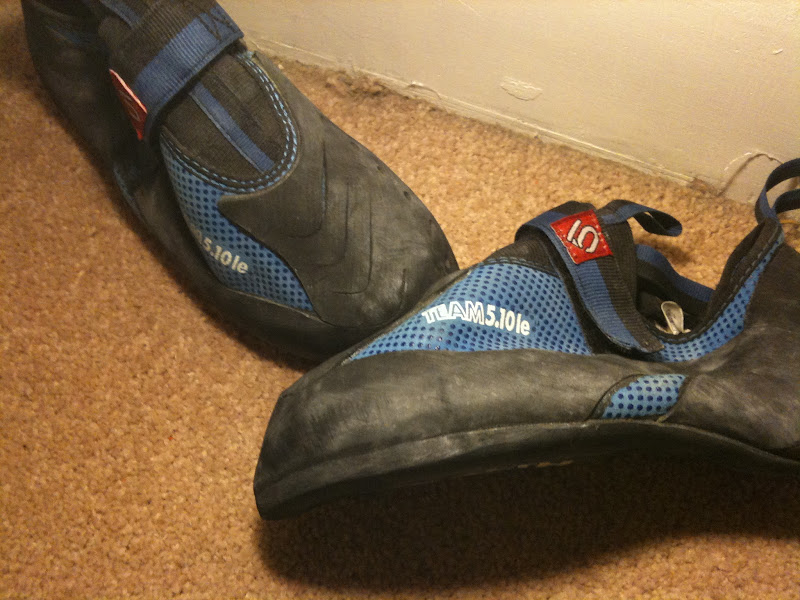Gear on rock - "no sustainability"?
Throwing the cat amongst the pigeons with this one!
A lovely little interview with Yvon Chouinard (founder of Patagonia) here and one quote, of many, caught my eye:
So I have a question, is all climbing trad gear the same? Even in my limited time of climbing in the past 10+ years, it's evident at crags where to put gear (think Bunnan Bui in the Burren), all the placements have been worn out from wires/friends being put into the cracks and pulled out again. Is it something that just is accepted, like chalk, as a side effect of climbing?
This obviously isn't just specific to trad gear also, the argument over bolts is long and well-tread hence I'm not giving it priority. And there's obviously also the peg issue as well which kind of falls somewhere in the middle (although I know where my own thoughts on pegs are!).
A lovely little interview with Yvon Chouinard (founder of Patagonia) here and one quote, of many, caught my eye:
"Yvon Chouinard: Yeah, well that was an unintended consequence of thinking we were doing the right thing. We made our pitons out of a harder steel so that they could be taken out and put in, taken out and put in, and last a long time. But it turned out when there got to be so many climbers around, putting 'em in and taking 'em out, it started destroying the rock. That was kind of our first lesson. The fact that we were causing the damage, so therefore we should do something about it."
So I have a question, is all climbing trad gear the same? Even in my limited time of climbing in the past 10+ years, it's evident at crags where to put gear (think Bunnan Bui in the Burren), all the placements have been worn out from wires/friends being put into the cracks and pulled out again. Is it something that just is accepted, like chalk, as a side effect of climbing?
This obviously isn't just specific to trad gear also, the argument over bolts is long and well-tread hence I'm not giving it priority. And there's obviously also the peg issue as well which kind of falls somewhere in the middle (although I know where my own thoughts on pegs are!).

No way can you equate the damage caused by placing and removing pitons with nuts and friends.
ReplyDeleteNot so sure after my experience of Dalkey last Sunday. Looking at how heavily gouged out the gear placements were on Stereotenticles, I'd wonder if repeated action is doing the same thing as one high impact piton placement.
ReplyDeleteanyway, not to say that trad gear is bad or anything, just something I'd been thinking about - how much climbs will have changed in 50/60/70 years time, especially with increasing numbers of climbers!
Theres no getting away from the fact that the act of climbing alters the rock. Especially on well traveled routes like quarry HVS's. The worst polish I've ever seen was on a 6a at the El Camino sector in Rodellar. Its especially evident on aid routes I've been on. Its a common phenomenon that a pitch that originally got A4 or A5 drops down to A2 due to the improvement in gear placements. Hands down the worst examples of damage to rock I've seen have been beat out pin placements and bolt rash at wall and sport belays. Pegs are the most destructive type of gear, but they're largely on the way out. Even on aid routes.
ReplyDeleteClimbers like to believe that we're outdoorsy, environmentally aware people, but my experience has proven otherwise. Useless tatty fixed ropes, drilled/glued/chipped routes, ugly bolt rash, fingertape, waterbottles and general rubbish left everywhere, shit on every patch of ground thats not directly on a path. I'm not saying that I'm any better. We have an impact. But cliffs fall down too. Everything is transient.
If you want to see what routes will look like in the future, go somewhere people have climbed extensively for 50 or 60 years. Yosemite, Font or the Peak District for example. Or Dalkey. A common theme I've seen is thatsport certain "classic" routes see the brunt of the action. The number of climbers might increase, but people don't change. Most will stay on the beaten track (beating it out even further). There'll always be untouched rock around if you look for it.
Great GREAT reply! Have to agree with you on most, I'm well aware that pretty much everything done in climbing has an impact so good description above.
DeleteValid point about the 'trade' routes though - that's pretty evident everywhere, at every crag. I suppose my only concern was here in Ireland was due to our crags being quite small - there's not a lot of routes to spread the load on? Still though, thinking about my weekend experience in Burren, most people were on the same routes......
thanks for reply :)